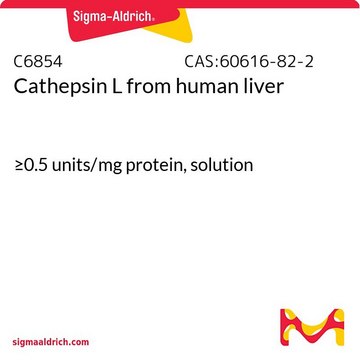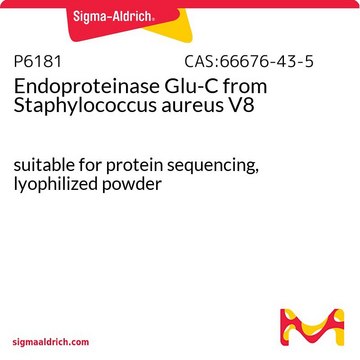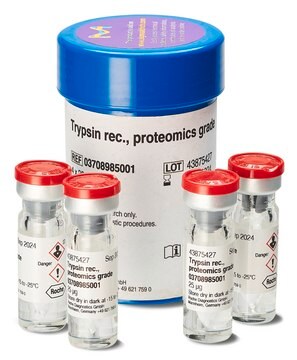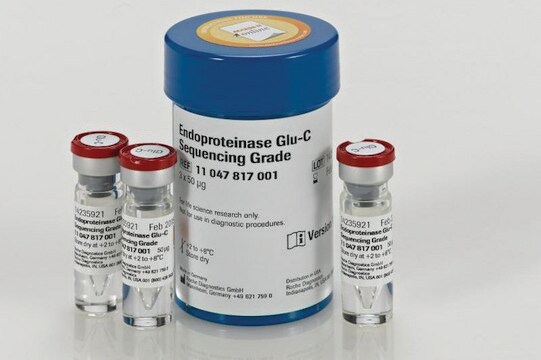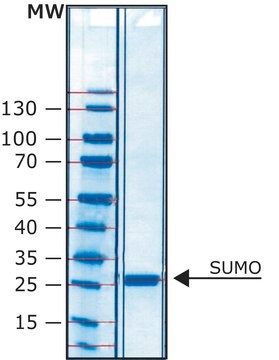219402
Cathepsin L, Human Liver
Cathepsin L, Human Liver, CAS 60616-82-2, is a native, the most potent of all the lysosomal proteinases. Plays a major role in the proteolysis of both cellular and endocytosed macromolecules.
Sinónimos:
CTSL, CTSL1, Human Cathepsin L, Major excreted protein (MEP)
About This Item
Productos recomendados
biological source
human liver
Quality Level
description
Merck USA index - 14, 1905
form
liquid
manufacturer/tradename
Calbiochem®
storage condition
OK to freeze
avoid repeated freeze/thaw cycles
technique(s)
activity assay: suitable
suitability
suitable for molecular biology
application(s)
life science and biopharma
shipped in
wet ice
storage temp.
−70°C
Gene Information
human ... CTSL(1514)
General description
Cathepsin L, Human Liver, native, is the most potent of all the lysosomal proteinases. Cathepsin L (CTSL) belongs to the papain subfamily of cysteine proteases and is mainly located in endolysosomal vesicles.
Biochem/physiol Actions
Packaging
Warning
Unit Definition
Physical form
Preparation Note
Reconstitution
Other Notes
Legal Information
Storage Class
12 - Non Combustible Liquids
wgk_germany
WGK 2
Certificados de análisis (COA)
Busque Certificados de análisis (COA) introduciendo el número de lote del producto. Los números de lote se encuentran en la etiqueta del producto después de las palabras «Lot» o «Batch»
¿Ya tiene este producto?
Encuentre la documentación para los productos que ha comprado recientemente en la Biblioteca de documentos.
Nuestro equipo de científicos tiene experiencia en todas las áreas de investigación: Ciencias de la vida, Ciencia de los materiales, Síntesis química, Cromatografía, Analítica y muchas otras.
Póngase en contacto con el Servicio técnico
